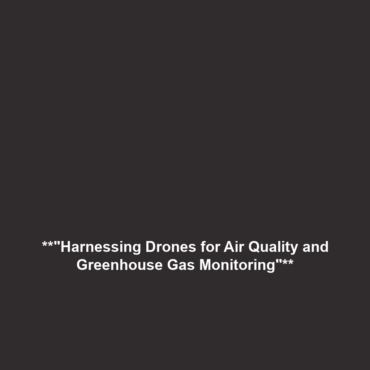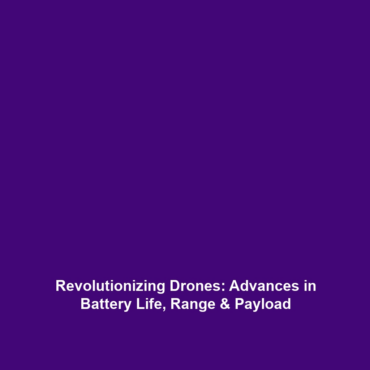Drones in Science: How Drones Are Used to Measure Air Quality, Greenhouse Gases, and Other Atmospheric Conditions
Introduction
Drones are transforming scientific research, particularly in the field of environmental monitoring. How drones are used to measure air quality, greenhouse gases, and other atmospheric conditions is a pivotal area within Drones in Science. These innovative flying robots enable researchers to gather data in hard-to-reach locations, providing valuable insights into atmospheric changes and pollution levels. As air quality deteriorates globally, the significance of drone technology for collecting real-time data has never been more critical.
Key Concepts
Understanding Drone Technology
Drones, also known as unmanned aerial vehicles (UAVs), are equipped with advanced sensors and analytical tools that play a vital role in measuring various atmospheric parameters. Key concepts related to this technology include:
- Sensor Integration: Drones deploy a range of sensors for measuring temperature, humidity, and specific greenhouse gas concentrations, such as CO2 and methane.
- Data Collection and Analysis: Drones collect vast amounts of data, which can be analyzed using sophisticated software to paint a comprehensive picture of air quality.
- Geospatial Mapping: With GPS capabilities, drones create precise spatial maps of pollutants and other atmospheric contents, enhancing understanding of environmental conditions.
Applications and Real-World Uses
The application of how drones are used to measure air quality, greenhouse gases, and atmospheric conditions is vast and includes:
- Urban Air Quality Monitoring: Cities use drones to monitor pollution hotspots, allowing for timely interventions.
- Agricultural Applications: Precision agriculture uses drones to track crop health and environmental conditions, optimizing yield and minimizing pesticide use.
- Disaster Response: Drones are deployed in disaster-stricken areas to assess environmental impacts and help authorities make informed decisions.
Current Challenges
Despite the benefits, there are several challenges of using drones to measure air quality:
- Data Accuracy: Variations in environmental conditions can affect sensor accuracy, leading to potential data discrepancies.
- Regulatory Issues: Airspace regulations may limit operational capabilities in urban environments, hindering data collection efforts.
- Technical Limitations: Battery life and payload capacity can restrict the duration and extent of data collection missions.
Future Research and Innovations
Looking ahead, innovations in drone technology are likely to enhance the field of how drones are used to measure air quality:
- Improved Sensor Technology: Next-generation sensors are being developed to enhance sensitivity and accuracy for real-time monitoring.
- Autonomous Flight Systems: Advances in AI will enable drones to navigate autonomously while collecting atmospheric data over vast areas.
- Integration with IoT: Future drones will connect with Internet of Things (IoT) networks to enable a seamless flow of data for better environmental management.
Conclusion
How drones are used to measure air quality, greenhouse gases, and other atmospheric conditions illustrates the profound impact of Drones in Science. As technology evolves, the potential for drones to address environmental challenges continues to grow. For further reading on the applications of drone technology in scientific research, explore our articles on environmental monitoring and innovations in drone technology.

